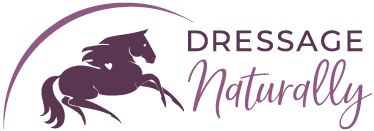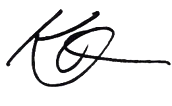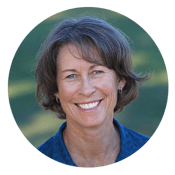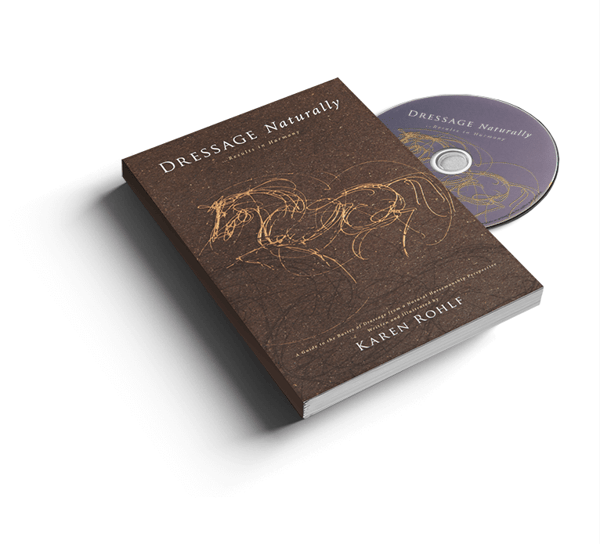We all need to think about horse welfare: what it looks like, how to define abuse, where to draw lines, and what to do about it. Ideally, we think even more about how to do right by our horses to begin with. It's essential that we, inside the horse community, take charge of this and prove to the world that we do care about the well-being of our horses. If we only focus on what's going wrong and only highlight the abusers, we run a risk of losing our social license completely.
The intention of this blog is to give a few ways to look at a welfare situation. It will help you answer the question: 'How can I help?' I share some insights into when and how to intervene, and who you may be able to help the best.
Horse welfare is important. Emotions run high. No matter how particular and mindful I am about how I phrase things, I may write something that will cause someone to think I am too harsh or too soft.
It is a reflection of the welfare questions in front of us: What is too harsh, and what is too soft? The next important question is: What is too harsh or too soft a response? As with most things related to horses, the answer is: It depends.
Conversations around welfare vary wildly from hard-line to nuanced. The consequences suggested range from shaming and punishment to forgiveness and education. Proverbial babies are being thrown out with bathwater, forests are being missed for the trees, heads are being put in the sand, and there's plenty of whitewashing going on. (This subject uses all the metaphors.) 😉
With all that said, my intention here is to be helpful. I don't have all the answers, and this is not comprehensive, but I hope it is a net positive.
Where Can YOU Be The Most Help?
Stories of horses in harmful situations leave many of us wondering what we can do to help. We all have different strengths and so can serve the greater good in different ways. Some of you are great at being inspirations and educators, some are great at promoting and sharing those inspiring people with the world. Some of you are great at encouraging and supporting people who are just starting to learn. Some of you are great at being compassionate forgivers, and some of you are great at being hardline enforcers of rules. The key is to be appropriate in your reactions. Find your superpower and unleash it on the appropriate people in the appropriate situations.
✔ If you love being an intervener and have no trouble taking bold emergency action: Go find the serious offenders and do your thing!
✔ If you are great at opening difficult conversations and finding ways to plant seeds in people's seemingly closed minds: Go find the people who are stuck in out-dated methods and don't see another way, and plant seeds of more horse-healthy possibilities.
✔ If you are great at encouraging and educating: Go find the people who want to learn.
✔ If you are great at promoting and highlighting others: Share the possibilities and help shine a light on people who are busy doing the good work.
✔ If you are a thought-leader or highly skilled in your art: Keep going, let yourself be seen, and let people learn from you. Keep engaging in nuanced conversations and helping others to uplevel.
We can all do our best to be positive examples in our own way. Don't underestimate the power of planting a seed, sharing something inspiring or educational, offering some help when asked, and giving encouragement and praise.
It sounds good... Now, for how to do that.
A Possible Model For Assessing.
Below is a model of several filters with which to view the whole spectrum of what's happening with horses and the people involved, as well as a scale of possible responses. Keep in mind that in observing any situation there is a very good chance you don't have all the information and our human brains will always default to the negative in that case. In other words it will assume the worst. On the other hand, sometimes things are exactly as they seem.
I'm hoping this can help you interpret specific situations, place them within a larger context, and have more clarity about what to do.
Someone told me that no model can be completely true, so "all models are wrong, but some of them are very helpful". I hope this model will be helpful.
Filter 1: Is the horse 'safe' or 'unsafe'?

Every discomfort to the horse is worth remedying. With that said, when we see something less than ideal, it is helpful to 'zoom out' and determine how urgent or dire a situation it is. On this scale the middle point is the difference between a 'safe' or an 'unsafe' situation. I'll leave others to fight over the criteria for that.
At the '0' end of the spectrum: The horse is in immediate mortal danger.
At the '10' end of the spectrum: The horse is mentally, emotionally, and physically thriving.
From 1-3, To different degrees, horses are mentally, emotionally, and/or physically suffering. Horse's needs are not being met.
Around 4-6 Horses experience varying degrees of unwellness, discomfort, and stress, which can tip easily from a safe to an unsafe situation depending on if the care is being adjusted appropriately. How safe or unsafe a situation is can depend a lot on what we learn by looking at Filter 2: Is the human working for or against the horse?
Between 7-9, life is pretty darn good, with more mental, emotional, and physical wellness, comfort than unwellness, discomfort, and tension, even if there is room to make things even better. In general, the care is appropriately adjusted to the horse's needs.
Filter 2: Is the human working for or against the horse?

Again, picture a spectrum.
At the '0' end of the spectrum is a human who purposely causes harm and/or death to the horse in the most cruel way possible.
At the '10' end of the spectrum is a human who makes all the perfect decisions to give the horse exactly what he needs at all times.
Somewhere around 1-3 are people who cause a lot of harm but don't think they do because they believe horses 'don't feel pain' and/or believe 'humans are meant to dominate horses'.
Around 4-5 are people who know they could do better but are unwilling to learn. These horses may be uncomfortable, and because of their human's attitude their situation could be unsafe. The human may or may not do better even if they know better.
Around 5-6 are people who get it wrong a lot but they are actively trying to learn and improve. Their horses may be uncomfortable, but they are likely safe. When the human knows better they do better.
Around 6-9 are people are trying their hearts out to do their best for their individual horse and are mostly successful.
With these two filters we can get a better idea of the real situation for the horse and we can get an idea about which direction things are likely to be heading.
Now, how do we respond?
A Possible Model for Responses and Reactions
After we assess the situation and see it in context, we can choose how to respond. No problem is too small to improve, but the approach taken needs to be appropriately helpful. Below is a scale of possible responses that takes into account the severity of the situation and the person's overall intention. While good intentions do not minimize harm done, it does affect the chance for a positive outcome if we approach the person in a way that does not turn them off from hearing what you have to say.
Scale of Responses

Situations at the '0-3' ends of the spectrum of both filters need to be stopped immediately. Intervention is necessary. Strong rules and restrictions need to be enforced. The human needs to be separated from horses immediately. Re-education of the human may or may not be possible, but it is not the top priority in the moment. The top priority is protecting the horse from this person. It's crucial to educate the students/clients of professionals in this category so they see more horse-friendly examples and know what to avoid and why.
With situations in the 3-5 range rules and restrictions need to be enforced to protect the horses, while at the same time the humans responsible need to be informed, educated, and enlightened. Creating new behaviors for people in this category requires them to have a change of heart and mind. These humans need to be shown strong evidence of a better way to get the results they want. It's crucial to educate the students/clients of professionals in this category so they see more horse-friendly examples and know what to avoid and why.
With situations in the 5-7 range, the people involved need to be educated and encouraged. Praise them for what they do well and offer help or resources where they can learn to do even better (rather than only punishing them for their mistakes).
With situations in the 7-10 range, the people need to be supported, even if not everything is perfect. Find the inspiring individuals. Learn more about what they are doing well and lift them up so they can be beacons of light. These are people who are probably open to nuanced conversations about doing what's best for horses.
The Nuanced Conversation
While I agree that we all must do our best for our horses, (and I for one, never feel like I am quite good enough), and I agree that any discomfort to horses is worth improving, that doesn't mean we have to use the most aggressively punishing reactions to 'lesser crimes' against horses in an otherwise safe and loving situation.
Context and nuance matters: The same harm may be remedied by education and encouragement with one person, where another would need rules, restrictions, and oversight.
We must also keep in mind that people aren't always solidly in one category. There are people who do amazing things for horses most of the time and have bad moments. I would argue that many of us fall into this category. What do we do in those cases? How do we feel about that?
There are also people who do horrible things to horses most of the time but have a moment where they show something that seems inspiring when viewed in isolation. What do we do in those cases? How do we feel about that?
We all have biases and forgive some people but not others. It may be interesting for each of us to understand our own rules around that.
Whenever we see something, we can't always know the means they used to get to those ends. Sometimes things that look amazing came from cruel practices, and sometimes a really horrible moment comes from an otherwise wonderful situation... Because life is very ironic sometimes.
I think the key is to respond appropriately to the moment and to stay firmly planted in what we know without making too many assumptions about what we don't. The brain will always default to negative when there is a lack of information. Excellent horsemen understand that behavior has a reason, and we can see the being as separate from the behavior. 'Bad behavior does not mean it is a bad horse.' We just need to establish some boundaries while educating.
We can extend that courtesy to humans, too. "That was a cruel thing you did" instead of "You are a cruel person". If we truly want to effect change, we may want to find ways to approach things where people's defenses don't go up immediately. Just as with our horses; connecting before redirecting. That doesn't mean that rules, restrictions, and consequences don't apply. Very lovely people sometimes go over the speed limit and they ought to get a ticket. Repeat offenders get their license taken away. Some people are reckless and the most important thing is they are stopped immediately.
With the disclaimer that every discomfort horses have is worth remedying, I worry about the degree of aggression, and shame sent towards people making 'smaller' mistakes when trying to do their best. We all have to learn somewhere and we all have made mistakes even when we do our best. It is often the most caring people who give up. I am so appreciative of all the compassionate educators available to help people who really do want to learn.
I also worry about the lack of reaction to the seriously horrible things happening out there. It's hard for me to look, and I know by not looking I am allowing it. I am appreciative of all the strong people who step in, intervene, and force accountability for the people doing the cruelty. I wrote another blog about this called Smoke & Mirrors & Horse Welfare which you can find HERE.
Principles & Priorities In Action
There is no 'one way'. Life is bumpy and messy. Nature can be harsh and unforgiving. Some horses and some people like to get gritty and scrappy and do hard challenges and come out the other side feeling proud and strong. Some horses and people can be stressed doing 'easy' work and go stir-crazy in boring environments.
Some individuals are satisfied by challenging work. Some horses and people want to sit in the shade and have everything as close to the same every day as possible. Others get anxious or bored in those conditions. No one situation is inherently right or wrong. Individuals are different and thrive on different things.
We can all have very different pictures of what a 'safe, fun, and healthy' life is for ourselves and for horses, we just need to keep measuring our picture versus the reality for any one particular horse.
We need more tools for assessing a horse's mental, emotional, and physical state at rest and in training. We need open minds, strong boundaries, and holistic views.
For those who want a guide to staying on the positive end of the horse welfare spectrum I created a Happy Athlete Training Scale to help keep a holistic view of horse's life and experience while in sport training. You can learn more about the Happy Athlete Training Scale HERE.
I hope you found this helpful. Every positive action helps... whether your actions create healthier situations for horses, or help others learn how to do that. Whether you are a person who creates rules and regulations or you are the one who enforces them, we ALL have a role we can play.
Thoughts?
Leave a comment below






